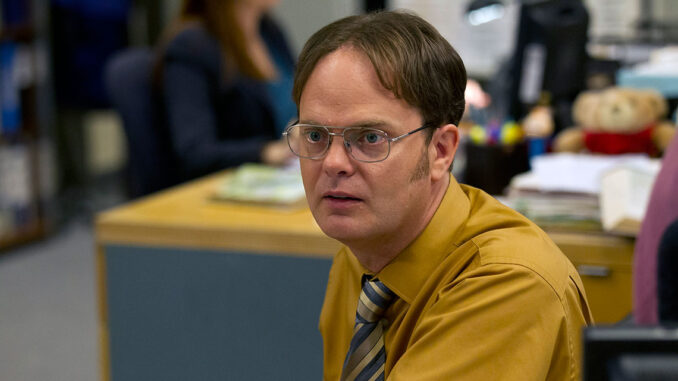
The fluorescent hum of Dunder Mifflin's Scranton branch was never just background noise; it was the hum of a unique reality, a carefully constructed illusion. The Office perfected the art of the mockumentary, blurring the lines between scripted absurdity and genuine human reaction. Every knowing glance at the camera, every uncomfortable silence, felt like a window into a real workplace. Yet, for all its meticulous scripting and improvisation, there was always the whispered legend, the unconfirmed anecdote, of the one blooper they not only left in but cherished – a fleeting tremor of authenticity that accidentally, gloriously, made the show more real than fiction could ever hope to be.
The scene, as the myth goes, unfolds in the drab conference room, bathed in the sickly yellow glow of overhead lights. Michael Scott, standing at the head of the table, is mid-tirade, attempting to inspire his dwindling sales team with one of his trademark, utterly misguided motivational analogies. Perhaps he's comparing their sales targets to a majestic bald eagle that "soars on the wings of customer satisfaction," or likening the quarterly report to "the true North of our sales compass." Whatever the specific phrase, it’s guaranteed to be bombastic, utterly nonsensical, and delivered with Michael’s unwavering, almost childlike conviction.
The camera, predictably, finds Jim Halpert. Jim, the avatar of the audience, the master of the deadpan, the purveyor of the subtle smirk. His job is to absorb Michael’s ludicrous pronouncements, process them through his filter of weary amusement, and then deliver a perfectly timed, wordless glance to the camera – a shared eye-roll with millions. It’s a precise art, a delicate balance of detachment and engagement.
But in this particular moment, something minutely, wonderfully, went awry. Michael, caught up in the fervor of his own eloquence, mispronounces a word, or perhaps his analogy takes a sudden, even more nonsensical detour, culminating in a verbal pretzel that even he seems to momentarily stumble over. It’s nothing egregious, nothing that would merit a full take-two. It’s just… peak Michael.
And Jim, in that instant, instead of his practiced deadpan, lets something else slip. It's not a laugh, not a full break of character. It’s far subtler, far more potent. It’s a barely perceptible pursing of the lips, a swift, almost involuntary twitch at the corner of his mouth, and then, as his eyes meet the lens, a fleeting flicker of genuine, un-acted amusement, a shared "can you believe this?" that transcends the character and reveals the actor beneath. It’s John Krasinski, for a split second, almost breaking. It’s the sheer force of Michael’s (or rather, Steve Carell’s) genius pushing through the carefully constructed façade of Jim Halpert.
And they left it in.
The beauty of this apocryphal blooper lies in its subversive power. The Office thrives on its simulated reality, but this tiny, unscripted moment accidentally shatters the fourth wall, not with a sledgehammer, but with a feather. It’s a whisper to the audience: "Yes, this is a show, these are actors, but sometimes, even they can't help but react like real people." It adds an unexpected layer of authenticity, a quivering vulnerability that somehow makes the characters more real, not less. Jim’s usual glances are a performance within a performance; this moment is a glimpse of the performer reacting to the performance.
Moreover, it deepens the character of Jim. His enduring charm lies in his ability to maintain composure amidst chaos, to be the calm eye of Dunder Mifflin’s storm. This minute crack in his poker face, this split-second surrender to the absurdity, humanizes him further. It suggests a camaraderie, an exasperated affection for Michael that goes beyond the script, echoing the real bonds formed on set. It validates our own reactions, giving us permission to chuckle along with Jim, not just at him.
The decision to keep such a moment in speaks volumes about the creative team's understanding of their own show. They weren't just making a comedy; they were crafting a living, breathing world. This blooper, rather than exposing the artifice, paradoxically reinforces the illusion. It’s the subtle imperfection that proves the handmade quality, the human touch. It becomes a badge of honor, a secret handshake between the creators and the most observant viewers, a testament to the magic that happens when art allows for the spontaneous, the unplannable.
In a show meticulously designed to feel unscripted, the one true unscripted moment becomes the most potent testament to its brilliance. It reminds us that sometimes, the most perfect takes are the ones that were never meant to be perfect at all, elevating a simple sitcom blooper into a profound illustration of television's elusive, authentic heart.
